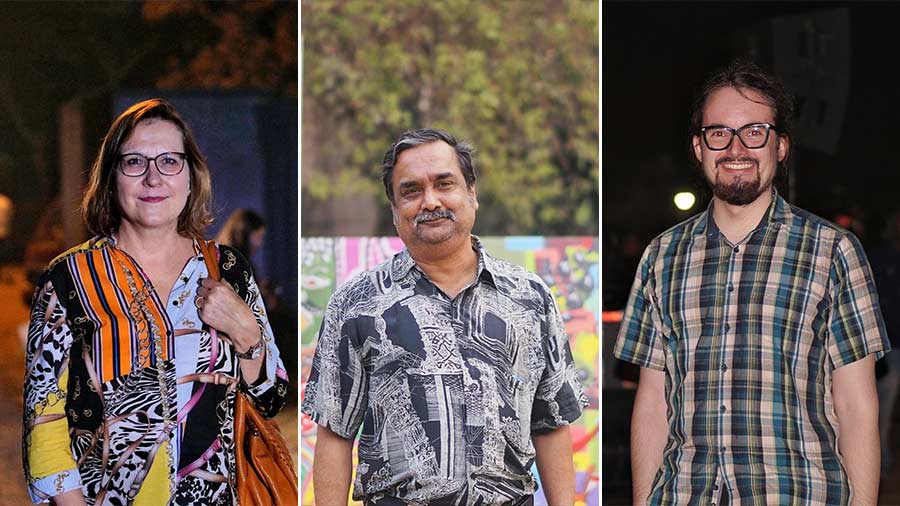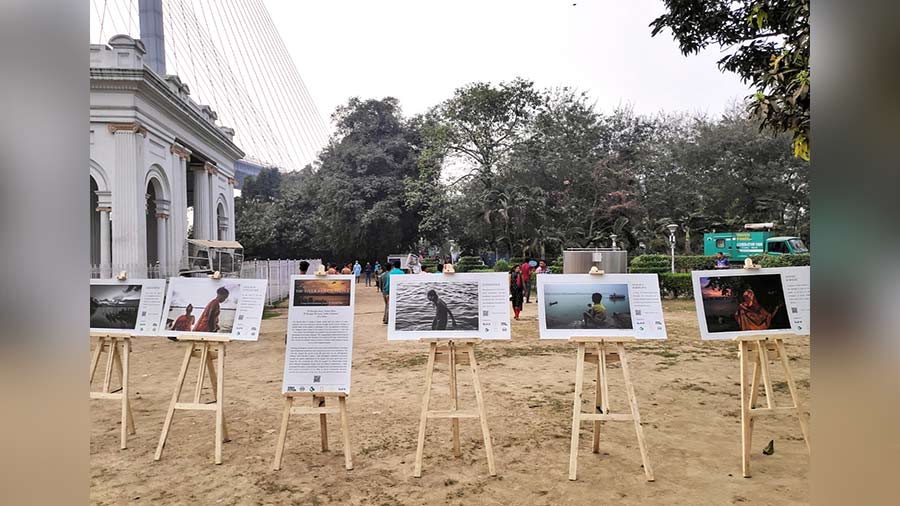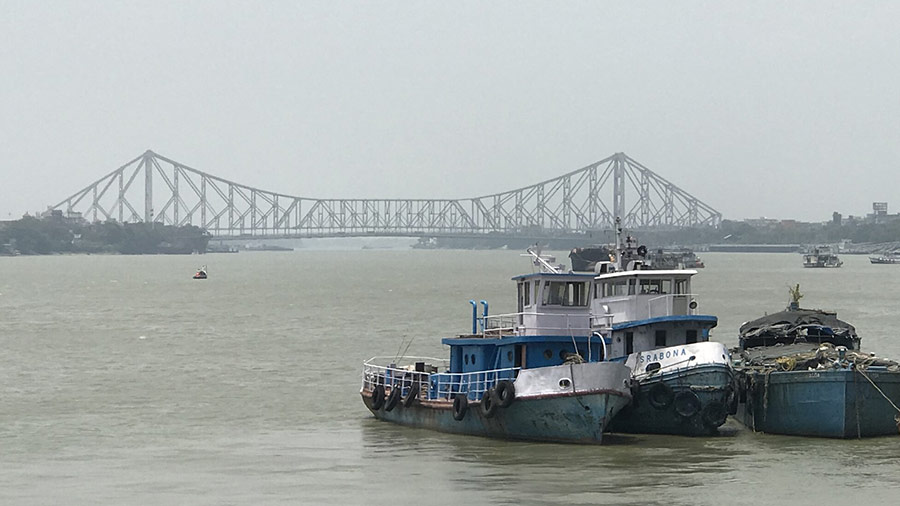“We always speak of the ghats of Benaras, but what about Bengal’s ghats?”
Laily Thompson, the founder of Kult X, is working to give Bengal’s ghats a much-needed makeover. The Kolkata-based organisation is geared towards undertaking social and cultural improvements in the city and to refocus the collective attention of Kolkata’s urban dwellers on the ghats of the Hooghly.
The River Festival, created by Kult X, was first held from November 2019 to February 2020. Weekend events were held at locations around the city, including Prinsep Ghat and the Indian Museum. For the second season, only small pop-up events were held at Champatala Ghat and Ahiritola Launch Ghat because of the pandemic.
This year, however, for the third edition, the River Festival was back with a full roster of events held at iconic Kolkata ghats. There were art and photography installations, mesmerising performances by artistes and bands, and enthusiastic participation of numerous student volunteers. The concluding evening of the festival that began on February 3 was held at Prinsep Ghat on February 18.
Depicting life through art and photography
The trees in front of the iconic Palladian porch built in memory of James Prinsep was the gallery for an open-air art exhibition. Paintings by Debashish Manna and other artists from his team done on bed sheets and paper depicted the never-ending journey of migrant labourers who are constantly moving in search of a living — much like the constant flow of a river. The abstract art exuded the sense of confusion and instability, typical of a migrant labourer’s life.

Debashish Manna and his team's art installation
The photography installation ‘The River and its People’, part of The Photo-Inclusion Project conceptualised by Pubarun Basu for the festival, showcased various moments from everyday life along the ghats. The initiative was part of the Freshwater Conservation project by Pubarun Basu supported by a Seed-Funding Grant by National Geographic Society and The Nature Conservancy. The photographs were the result of a workshop where city photographers were partnered with young adults from Life Project 4 Youth, a France-based organisation that works towards the social and professional integration of young adults from impoverished backgrounds. The youngsters had the opportunity to learn from young photographers and were guided by them in the process of capturing the reflection of everyday life along the ghats. Through the eyes of each participant, visitors saw not only the beauty of the ghats but also the daily life of nearby inhabitants.
Conscious living through music and fashion
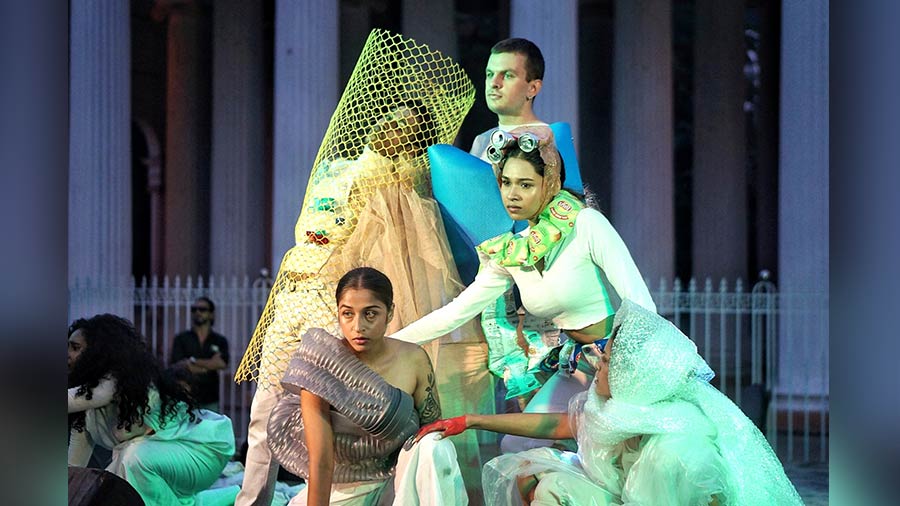
The Wake Up Call – a Trashion Show
Conscious choices are the bases for sustainable and joyful living. To highlight the implications of fast living, the participants of The Wake Up Call – a Trashion Show dressed up pieces fashioned from trash to reiterate how detrimental it is to the environment. A call for making improved environmental living decisions was made at the end of the fashion exhibition.
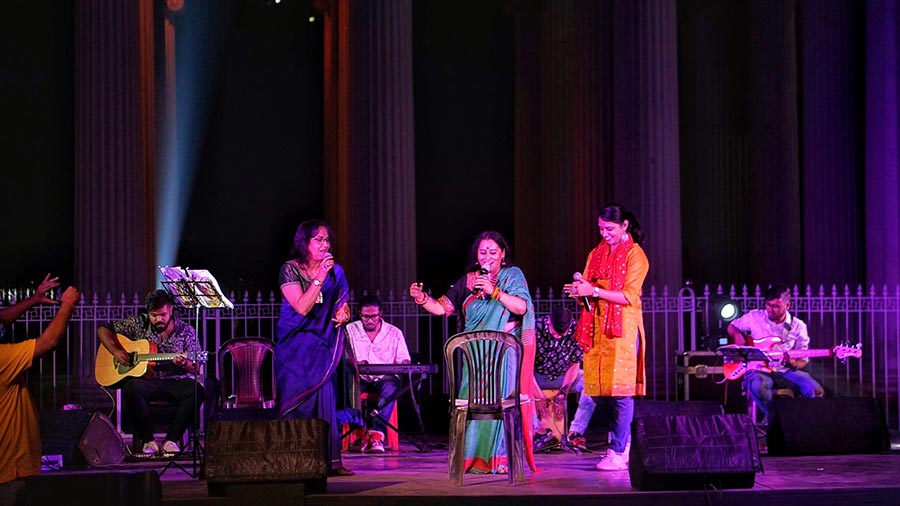
The Humming Bards, Ritika and Piloo, performing
Going along the journey of living with joy was the message of the musical duo Piloo and Ritika, who call themselves The Humming Bards. The audience was on its feet when they performed popular numbers such as Ghodey pe sawaar, Aaj jibon khunje pabi, and Jamaica Farewell. The performance ended with a medley of songs featuring Dhitang dhitang bole, Pindare palasher bon, Kanchi re kanchi re, Ae lo pyar ke din aaye.
Dance as a way of life
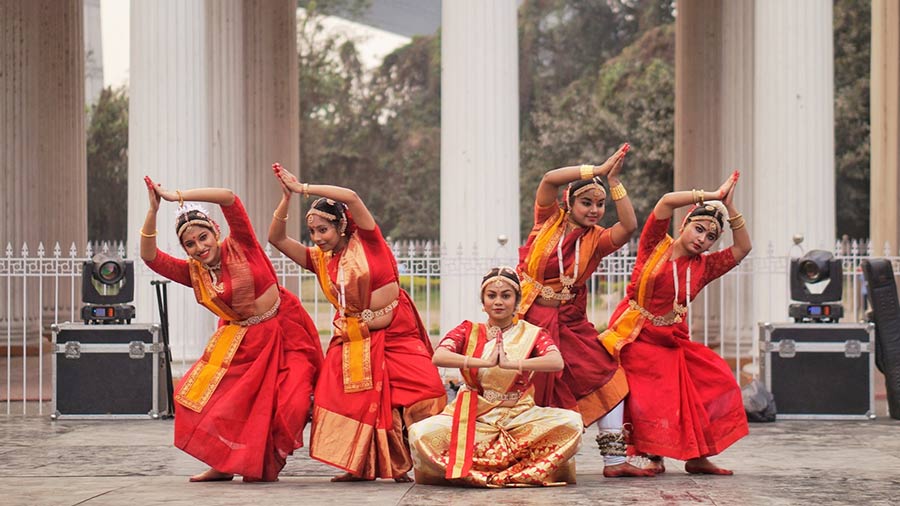
Dancers from across the city performed at the River Festival
Artistes from across the city mesmerised the audience with their dance performances. The first act was Nadi Kavitwam, a Bharatanatyam performance paying homage to Indian rivers. Several dance groups, including Shinjan Nrityalaya, Kalashrishti Kalakars, Stories in a Box, and Prana Pallava, put up performances in different dance styles such as Odissi, freestyle, and creative.
The most awaited dance act of the evening was Amala Dianor’s solo piece ‘Man Rec’. The piece, whose name means ‘only me’ in Wolof — a widely spoken dialect from Dianor’s native Senegal — is conceptualised as a conversation between Dianor’s many cultural influences. Through a multi-style composition that included traditional African dances and contemporary dance, Dianor put up a piece that explores themes of self, identity, relationships with people and society, and what remains when layers of cultural origin are successively erased.
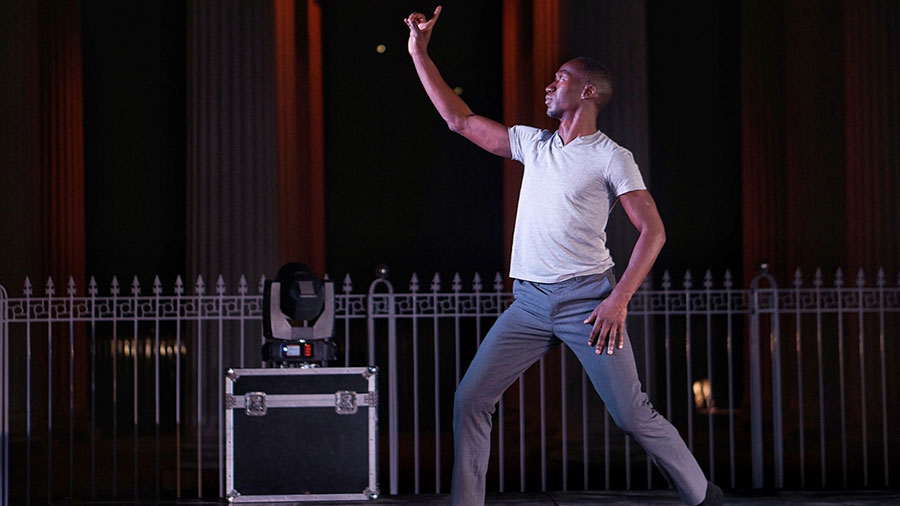
Amala Dianor’s solo piece Man Rec
Speaking about the festival, the French-Senegalese dancer said, “For me, the River Festival is interesting because most of the time when I am invited, it is for theatre performances or dance festivals. Here, the purpose of this festival is to make people conscious about the river and its ecology. This makes sense to me because art is being used to make people conscious of what is essential. Being here is a great honour for me and I am very thankful to be a part of the festival.” The artiste also enjoyed his time in Kolkata. “I found the people very welcoming. There is such great energy because everyone is involved in something that they enjoy.”
The concluding act of the event was a fusion performance by Ed Thompson and Kathak dancer, Nilanjana. The piece titled ‘Eta Amader Kolkata’ was a jugalbandi of sorts with Thompson’s poem of Kolkata and Nilanjana’s Kathak rendition.
The start of a virtuous cycle

Kult X founder Laily Thompson with (right) dancer Amala Dianor
“We could renovate Champatala Ghat with the support of Syama Prasad Mukherjee Port and Kolkata Municipal Corporation and with funding from Rotary Club of Calcutta,” said founder Laily Thompson, adding that they are trying to start a citizens' movement to keep the ghats clean.
Kult X has ambitious plans of renovating one ghat each for the next five years. “We plan to have functions every month on the ghats, not always by us, but by anybody. The more events there are on these ghats, the more people will keep it clean and eventually it will become a virtuous cycle,” she added.
Audience speak
